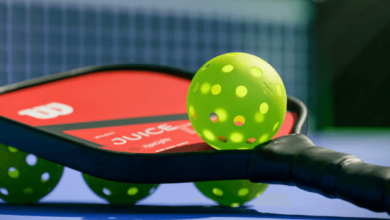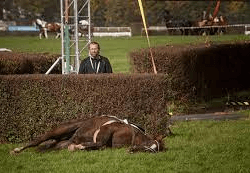What Are The Different Phases In Combined Driving?

Combined driving is a thrilling equestrian sport that showcases the harmonious partnership between horse and driver. It consists of three distinct phases: dressage, marathon, and obstacle driving.
Each phase tests different aspects of the horse and driver’s abilities, making combined driving a challenging and exciting competition.
The dressage phase is the first part of combined driving and focuses on demonstrating precision and harmony in movement. Drivers guide their horses through a series of intricate patterns and movements, aiming to showcase their control and obedience. This phase requires precise communication between horse and driver, as they must work together seamlessly to execute each movement flawlessly. The dressage phase not only displays the skill of the driver but also highlights the athleticism and training of the horse.
Following the dressage phase comes the marathon phase, which tests both speed and agility. This portion takes place over an extended distance with multiple obstacles along the way. Drivers are required to navigate through diverse terrain while maintaining speed within set time limits. The marathon phase challenges both physical endurance and mental focus as drivers make quick decisions on routes to take while ensuring their horses maintain optimal energy levels throughout. It is during this exhilarating phase that drivers truly experience a sense of freedom as they navigate open spaces with speed and agility.
Overall, combined driving offers an extraordinary opportunity for both horse and driver to showcase their skills across various disciplines. From the precision required in dressage to the adrenaline rush experienced during marathons, each phase presents its own unique challenges while satisfying our innate desire for freedom in motion. Whether you are a participant or spectator, combined driving promises an enthralling display of teamwork, athleticism, and passion for equestrian sports.
Dressage Phase: Showcasing Harmony and Precision
The dressage phase in combined driving serves as a platform to demonstrate the horse and driver’s ability to perform precise and harmonious movements with impeccable control and obedience.
This phase focuses on improving communication between the horse and driver, as well as developing a strong partnership. The dressage test consists of a series of predetermined movements, such as circles, transitions, and lateral work, which require both the horse and driver to be in sync.
The goal is to showcase the horse’s suppleness, balance, and obedience to the driver’s aids. Precision is key in this phase, as each movement is scored based on its accuracy and execution.
The dressage phase not only highlights the technical skills of both the horse and driver but also emphasizes their ability to work together seamlessly. It sets the foundation for success in the other phases of combined driving by establishing a solid connection between horse and driver.
Marathon Phase: Testing Speed and Agility
The marathon phase in combined driving is an adrenaline-fueled race against the clock that tests the speed and agility of both the horse and driver.
This phase consists of navigating challenging obstacles, such as water crossings, hills, and tight turns, which require precise maneuvering skills.
It also serves as a display of the horse’s stamina and maneuverability, showcasing its ability to maintain a consistent pace throughout the course.
Adrenaline-Fueled Race Against the Clock
One fascinating statistic that helps to depict the adrenaline-fueled nature of combined driving is the average speed recorded during these races, which can reach an astonishing 30 miles per hour.
This thrilling excitement and intense competition create an exhilarating experience for both participants and spectators alike.
As drivers navigate through challenging obstacles and tight turns, they must rely on their skills and quick decision-making abilities to maintain control of their carriage.
The race against the clock adds another layer of intensity as competitors push themselves and their horses to reach their maximum potential.
The combination of speed, agility, and precision in combined driving creates a captivating spectacle that appeals to those with a subconscious desire for freedom, offering them a taste of the exhilaration experienced by those behind the reins.
Navigating Challenging Obstacles
Navigating through a labyrinth of intricate obstacles requires drivers to exhibit precision and finesse as they guide their carriages with utmost care. Overcoming obstacles is a critical aspect of combined driving, and drivers must employ strategic maneuvers to navigate through challenging courses successfully.
The first sub-list includes the importance of careful planning before attempting each obstacle, ensuring that the driver has a clear understanding of the layout and potential challenges.
Secondly, drivers must possess excellent communication skills with their horses, as they rely on verbal cues and subtle shifts in body weight to guide them through the obstacles.
Lastly, drivers must be quick-thinking and adaptable, ready to adjust their strategy if unexpected hurdles arise during the course.
With these skills in hand, combined driving competitors can tackle any obstacle with confidence and finesse, showcasing their expertise in this exhilarating equestrian sport.
Displaying Horse’s Stamina and Maneuverability
Revealing the horse’s true strength and agility, competitors in this equestrian discipline showcase their equine partners’ endurance and dexterity as they navigate through a labyrinth of intricate obstacles.
Combined driving tests the horse’s endurance as they effortlessly pull the carriage over various terrains, including rough terrain, steep hills, and water crossings. The driver’s strategy plays a crucial role in managing the horse’s stamina throughout these phases. They must carefully pace the horse’s speed to ensure it remains strong and energetic until the end of each phase.
Additionally, maneuverability is key in successfully negotiating tight turns, narrow passages, and challenging combinations of obstacles. Competitors must rely on their horses’ quick reflexes and ability to change direction swiftly while maintaining control and balance.
Overall, displaying both the horse’s endurance and maneuverability requires careful planning from the driver along with a well-trained equine partner capable of meeting these demands.
Obstacle Driving Phase: Demonstrating Skill and Coordination
During the obstacle driving phase in combined driving, participants showcase their skill and coordination by navigating a course of challenging obstacles with precision and finesse.
This phase requires a high level of agility and speed as drivers guide their horses through a series of gates, cones, bridges, and other obstacles.
The course is designed to test the driver’s ability to maneuver the carriage and horse through tight turns, narrow passages, and difficult terrain.
Skill and precision are essential as drivers must carefully calculate their approach to each obstacle in order to successfully navigate it without knocking down any cones or gates.
The driver’s communication with the horse is crucial during this phase, as they must work together seamlessly to execute each maneuver with accuracy.
Additionally, the driver’s ability to anticipate the horse’s movements and adjust accordingly contributes to maintaining an optimal pace throughout the course.
Overall, the obstacle driving phase requires both mental acuity and physical dexterity from drivers as they strive for mastery over this demanding discipline of combined driving.
Frequently Asked Questions
What are the rules and regulations for combined driving competitions?
Combined driving competitions are governed by strict rules and regulations. These guidelines outline the requirements for participants, judging criteria, and penalties for rule violations. They ensure fair competition while maintaining the safety and integrity of the sport.
How is the overall winner determined in combined driving events?
The overall winner in combined driving events is determined by the cumulative scores from each phase. Judges score the different phases based on specific criteria, and penalties can be incurred for various infractions during competition.
Are there any specific horse breeds that are more suitable for combined driving?
The suitability of horse breeds for combined driving is dependent on various factors, including their temperament, athleticism, and trainability. Certain breeds, such as the Dutch Warmblood and the Friesian, are often preferred due to their versatility and adaptability to training requirements.
What are the common types of obstacles encountered in the obstacle driving phase?
Water obstacles and bridge obstacles are common types of obstacles encountered in the obstacle driving phase of combined driving. These challenges test the skill and agility of the horse and driver, adding excitement to the competition.
How do the drivers communicate with their horses during the competition?
Drivers communicate with their horses using horse signals and rein aids during the competition. Similar to a conductor leading an orchestra, the drivers use these signals to guide and direct their horses, ensuring precise movements and seamless coordination throughout the event.
Conclusion
In conclusion, combined driving consists of three distinct phases: dressage, marathon, and obstacle driving.
The dressage phase serves as a platform for drivers to showcase their harmony and precision with the horse. It requires a deep understanding of communication between the driver and the horse, as well as an ability to execute precise movements with grace and poise.
The marathon phase puts drivers’ speed and agility to the test. It involves navigating through a series of obstacles over varied terrain within a specified time frame. This phase demands quick thinking, adaptability, and skillful maneuvering in order to complete the course successfully.
Lastly, the obstacle driving phase highlights drivers’ skill and coordination by challenging them to navigate through a complex set of cones or gates within a confined space. It requires precise control over speed, direction changes, and tight turns.
Overall, combined driving is an equestrian sport that demands mastery in various aspects such as communication with the horse, physical agility, mental acuity, and technical expertise. Each phase presents its own unique challenges that drivers must overcome in order to achieve success.
Through their dedication and training, combined drivers demonstrate not only their love for horses but also their commitment to excellence in this exhilarating sport.





